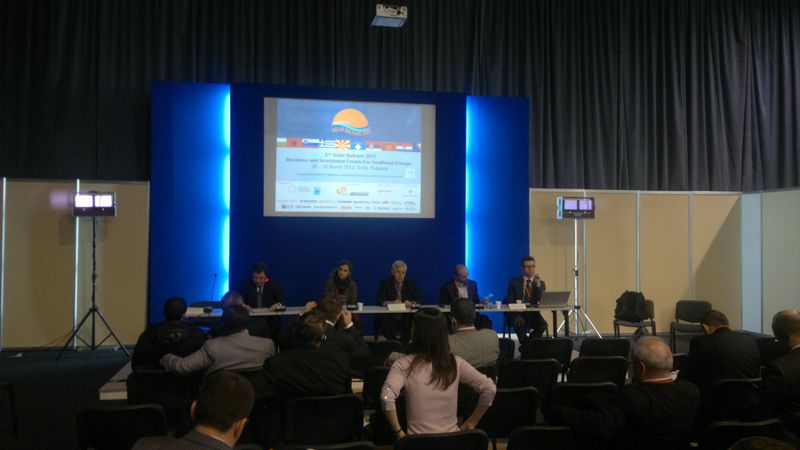Marie Latour: There is huge pressure on RES by conventional energy lobbies
Adelina Marini, April 18, 2011
Only in 2010 the solar market has registered global growth of 135%, according to the presentation of Marie Latour from the European Photovoltaic Industry Association (EPIA) in the first day of the Solar Balkans Business Forum 2011 in Sofia. This data also shows forecasts of an increasing growth in the years to come. Quite naturally such a speed is a reason for concern whether a bubble is being developed. Countries like Spain and the Czech Republic have already experienced a collapse of their markets after they reached gigantic sizes. According to Marie Latour, though, market's development depends entirely on national policies.
She says that policies follow much more slowly the market dynamics. Some countries cope better (Germany), others not so much. Nonetheless, formulation of policies should remain at national level, Latour says, thus answering euinside's question whether it would be better the solar market to be regulated at European Union level. Moreover, data shows that the Community had 81% share in the global solar market in 2010. Of course, it could be assumed that a large part of this 81% is due to Germany and also to the Czech Republic which was among the largest markets in the world.
In order to avoid bubbles, however, the recommendations of EPIA are - lessons to be learned from others' experience in order to avoid replication of mistakes. And one more thing we heard several times during the forum and also in the interviews we made - predictability, stability and sustainability of market. By the way, this is valid for every part of the economy, but regarding renewable energy sources (RES) the situation is a little bit different for several reasons. The first is that the investment is long-term, return is slow and the sources themselves are not variable.
Second, in many countries, as Marie Latour also admits, RES are subjected to intense pressure by the lobbies of conventional energy sources. Moreover, RES are put into unfair competition because, according to the association's data, subsidies for conventional energy sources are almost 7 times bigger than those for RES. Impression is also created that photovoltaic (PV) energy is more expensive. Marie Latour explains though, that in many countries administrative burden is what creates hidden costs not covered by the feed-in tariff which is aimed at development of technology. Thus, the losses for investors are bigger and the price of electricity then is paid by all consumers because of ineffective administration.
This is why she calls for as less as possible administrative barriers that should reflect the size and dynamics of the market, and more investments in technologies. Regarding price, the association's forecast is that the price of electricity generated by PV installations would drop from 0.36 euro cents KWh in 2010 to 0.19 euro cents in 2020. There is an even more optimistic forecast but everything depends, after all, on feed-in tariffs and by the price of PV components. And as Nicola Gazdov, Chairman of the Bulgarian PV Association explained to euinside, this price drops with every doubling of installed capacities.
 | © euinside
| © euinside | © euinside
| © euinside | © euinside
| © euinside